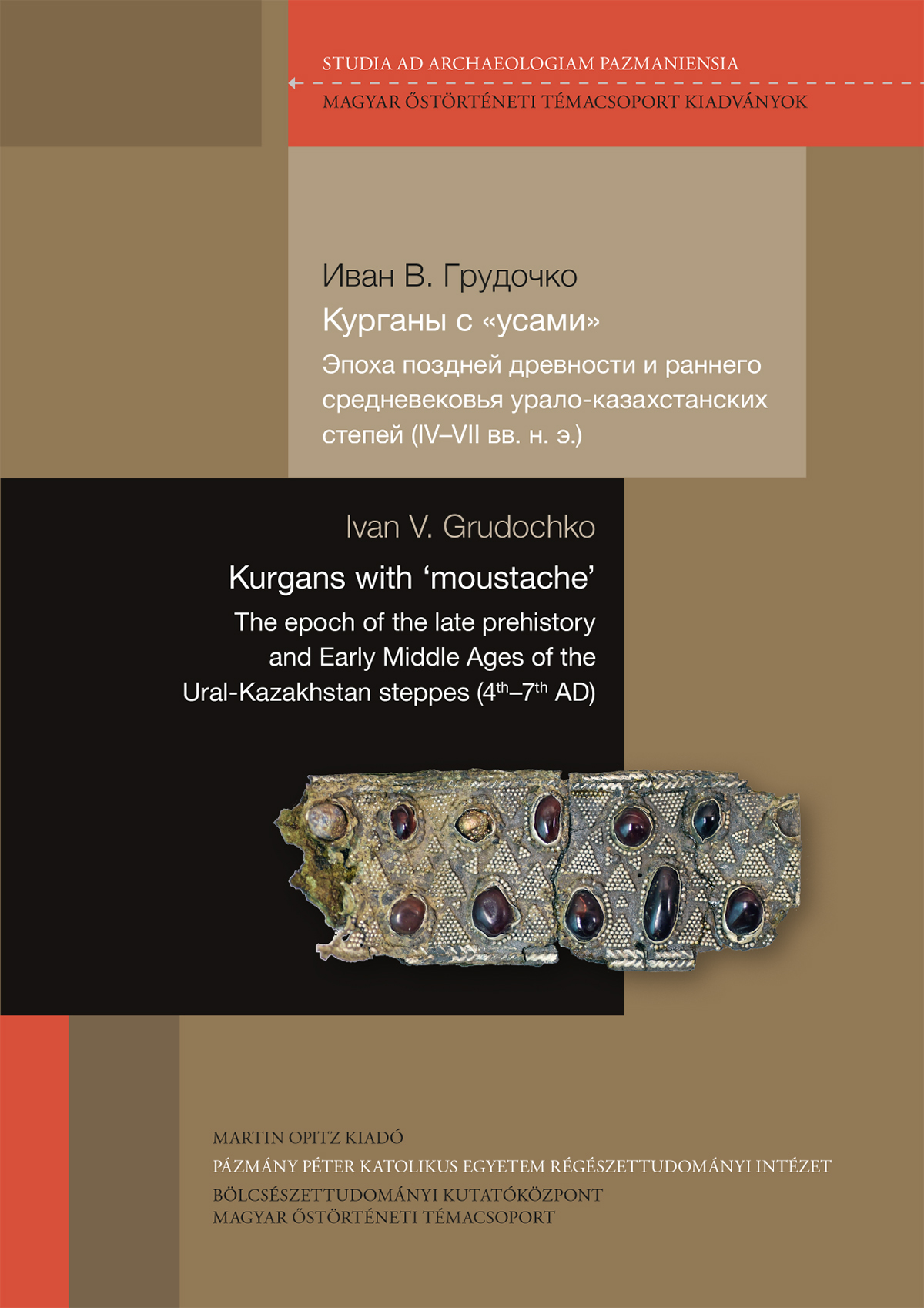Kurgans with 'Moustache' – The epoch of the late prehistory and Early Middle Ages of the Ural-Kazakhstan steppes (4th–7th AD)
Tartalom
This book is dedicated to kurgans with a “mustache” that have been discussed more than 20 years. Then we spoke out that the period of 4th–7th centuries AD in the Ural-Kazakhstan steppes was a “troubled time” we, in fact, have known almost nothing of, and it’s difficult to learn or discover something new here, and the mounds with a “mustache” as a whole were hardly considered as early medieval complexes. However, at a certain point it was noticed that something seemed incorrect about the kurgans with a “mustache”, not because of someone else’s misconceptions, but because they are archaeologically very poor sites (figuratively speaking, «ungrateful»). We need to keep in mind that laborious excavations of such a complex usually yield nothing but the animal bones and a pot of rough modeling (sometimes without a pot at all). Thus, they are very complex, very incomprehensible sites and it was necessary a certain time to pass since my colleagues I. I. Lyubchansky and A. D. Tairov and I introduced these sites into the arsenal of early medieval history. However, a better justification was necessary at the next stage, since not all colleagues had found this sufficient. For example, our Kazakhstani colleagues either defend the “ancient” date of the kurgans with a “mustache”, or stretch their existence from the Early Saka to the early medieval era, implying almost a thousand-year history. In order to clearly typologize, prove, and thoroughly find all the arguments that exist in the chronology, typology, and ethnocultural interpretation of these monuments, a great deal of work was needed, and it seems to me, I. V. Grudochko successfully coped with the challenges.
The book is based on materials that have already been known, but there are several sites that the author excavated himself. In addition, a whole series of complexes and radiocarbon dates requiring systematization with previously known ones have been introduced over the past decade. And it seems to us, I. V. Grudochko succeeded. In particular, he managed to build a chronology and a typology, connect them together and put on a geographical map. In fact, this immediately yielded result, since it became obvious that the tradition of mounds with a “mustache” extends from East Turkestan and East Kazakhstan to the Trans-Urals and Mugodzhar, coinciding in time with key events of late antiquity and the early Middle Ages – the Hunnic and Early Turkic eras. In different territories these sites were really built on the more ancient Saka or Sarmatian burial grounds. This is one of the traits and characteristics of the nomadic population, who intuitively felt their great-grandfathers and therefore occupied their sites.
I think that the book by I. V. Grudochko today sums up a certain result of the study of the kurgans with a “mustache” and will be useful everybody who are interested in the history and archeology of the nomads in the Ural-Kazakhstan region. Prof. Dr. Sergey Botalov

Letöltések
Megjelent
Sorozatok
Nyomtatott ISSN
License

This work is licensed under a Creative Commons Attribution-ShareAlike 4.0 International License.



